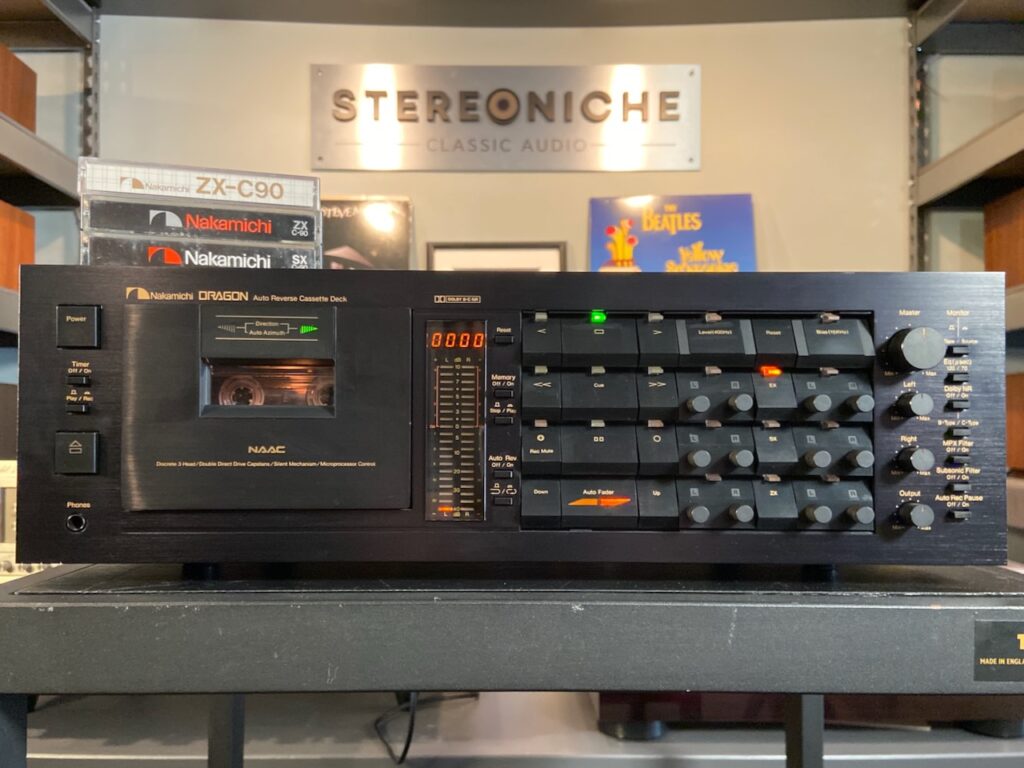The Nakamichi Dragon: A Legend Forged in Tape
In the hallowed halls of vintage audio, few names resonate with the reverence and awe reserved for the Nakamichi Dragon. More than just a cassette deck, it is an icon, a beast of burden in the pursuit of sonic perfection that dominated the landscape for over a decade and remains a highly sought-after masterpiece today.
Introduced in 1982, a time when the cassette format was at its peak, the Dragon wasn’t just another player; it was a statement. It remained in production for an impressive eleven years, finally ceasing its reign in 1993. This longevity is a testament to its unparalleled performance and enduring desirability in a rapidly evolving technological world.
Behind the Dragon’s formidable presence was the brilliant mind of chief designer Tatsuro Horikoshi. A man of diverse talents, Horikoshi was also the visionary responsible for the distinctive and widely admired lines of the Yamaha Virago motorcycle. This intriguing connection between a legendary audio component and an iconic motorcycle speaks volumes about Horikoshi’s design philosophy – a blend of intricate engineering, functional elegance, and a touch of the extraordinary.
While myths within the vintage audio community sometimes suggest the Dragon’s faceplate and buttons were inspired by a mythical creature, the truth is more personal and poignant. The project name for this ambitious deck was simply “Dragon,” a name bestowed upon it by none other than Etsuro Nakamichi, the company’s founder. So taken was he with the power andイメージ of the name that he decided it should grace the final production model.
A touching anecdote woven into the history of Nakamichi tells of Tatsuro Horikoshi visiting Etsuro Nakamichi in the hospital, eager to share the final designs of the deck that would carry the name he had chosen. Sadly, and perhaps adding to the legend, Mr. Nakamichi passed away before the Dragon was officially released to the world, making the final product an unintended, powerful tribute to his vision.
But the Dragon’s legacy is built on more than just a captivating origin story. Its performance was, and remains, exceptional. Featuring Nakamichi’s renowned asymmetrical dual-capstan transport, it offered incredibly stable tape movement, minimizing wow and flutter to near-inaudible levels. The true innovation, however, lay in its revolutionary NAAC (Nakamichi Auto Azimuth Correction) system. This ingenious technology automatically adjusted the azimuth of the playback head for each individual tape, ensuring optimal high-frequency response and compatibility with tapes recorded on any other machine. This feature alone solidified the Dragon’s position at the pinnacle of cassette playback.
The sound quality delivered by the Dragon was, quite simply, breathtaking. It extracted every last detail from the tape, presenting music with a clarity, depth, and dynamic range that often rivaled open-reel recordings. Its ability to reproduce the nuances of complex musical passages and the subtle decay of notes was, and still is, remarkable.
The Nakamichi Dragon is a true legend of the audio world. Its extended production run, groundbreaking technology like NAAC, the intriguing connection to motorcycle design through Tatsuro Horikoshi, and the touching story behind its name all contribute to its iconic status. The Dragon wasn’t just a cassette deck; it was a statement of intent, a pursuit of perfection that resulted in a machine that truly “slayed them all.” For audiophiles and collectors, the Dragon remains a highly coveted piece of history, a tangible link to an era when cassette tape reached its glorious, fire-breathing peak.

